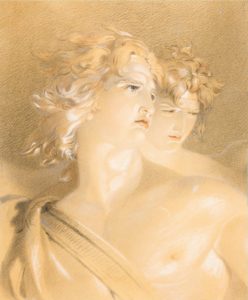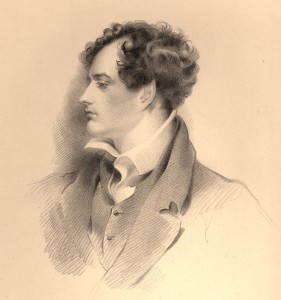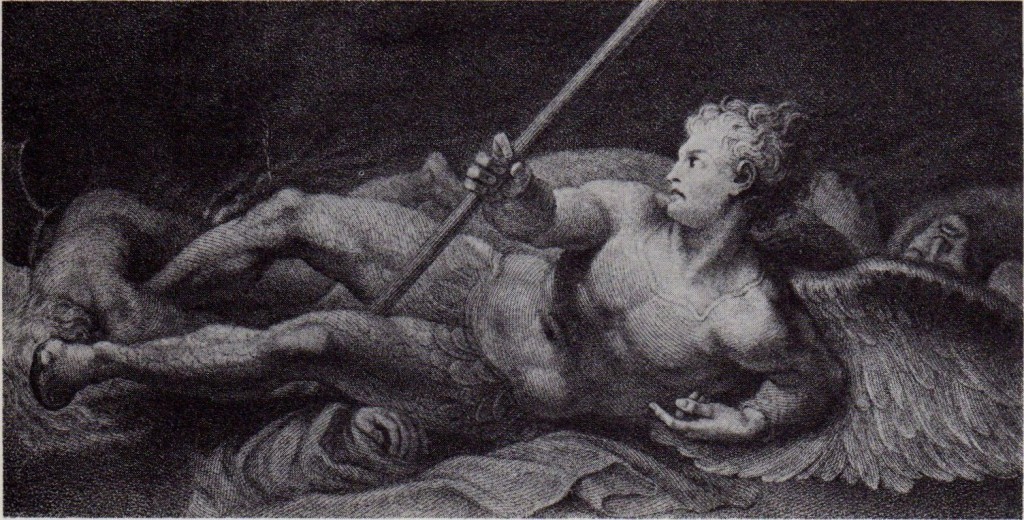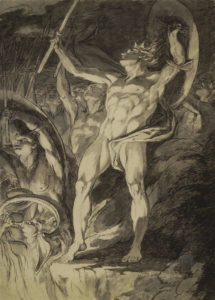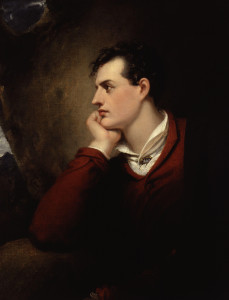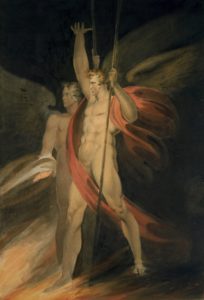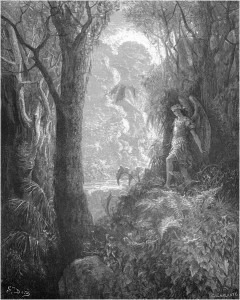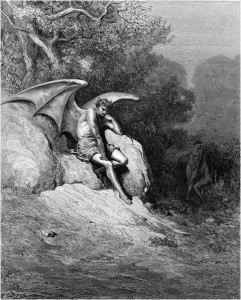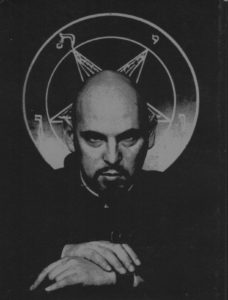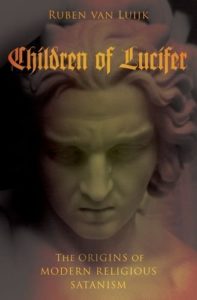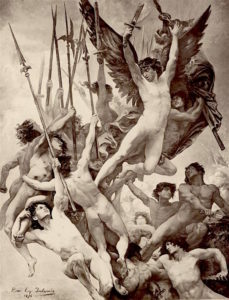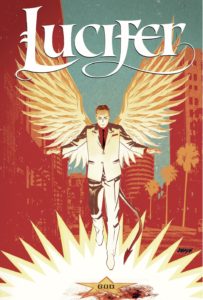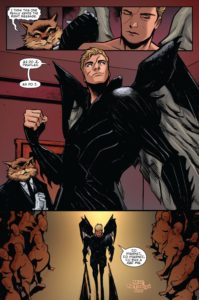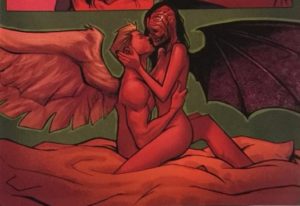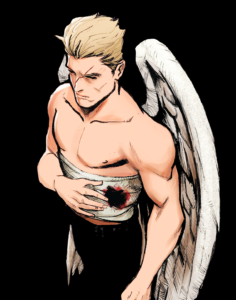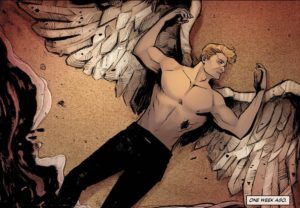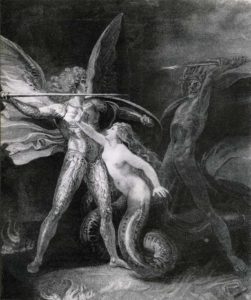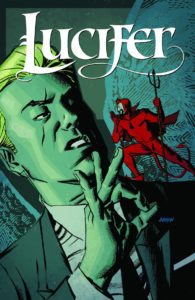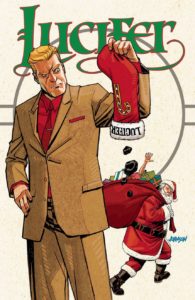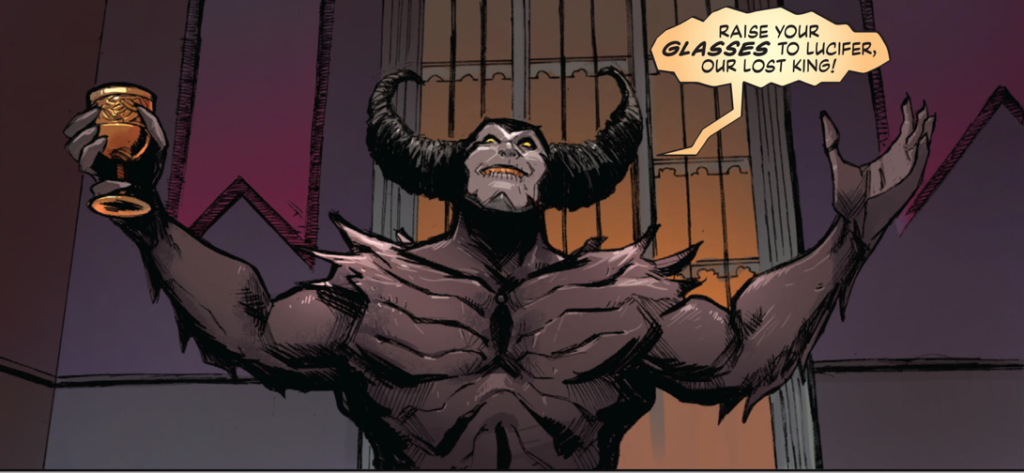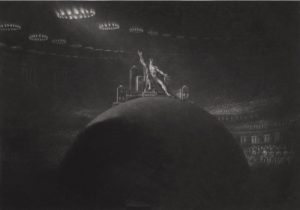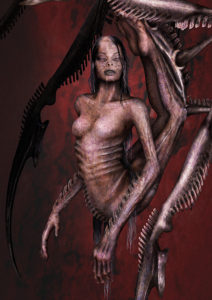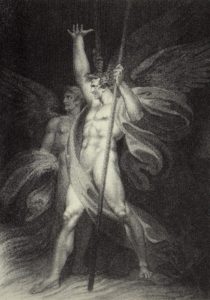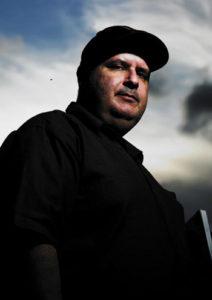As I have covered at length, the Miltonic-Romantic tradition has received scant attention within Satanism proper, i.e., organized Satanism, which began with Anton LaVey’s Church of Satan, founded in 1966 by San Francisco’s “Black Pope.” Within this quintessential counterculture’s first decade, however, there was an opportunity for Satanism to shift into more of a Miltonic-Romantic direction, courtesy of the Church of Satan’s leading intellectual, Michael A. Aquino. What occurred instead is a curiosity: Satanism overshot Romanticism, landing in ancient Egypt.

According to The Church of Satan, Aquino’s two-volume critique of LaVey’s endeavor, when Aquino was a Second Lieutenant in the U.S. Army on leave in his native San Francisco in 1968, the young military officer caught his first glimpse of LaVey in a chance encounter. Walking out of a theater following a showing of Roman Polanski’s Satanic horror classic Rosemary’s Baby, Aquino was met with the peculiar sight of the shaven-headed, Mephistophelean-goateed LaVey and a group of his sable-robed associates, who were being used to promote the demonic-themed film—and who were in turn using the film to promote LaVey’s newly founded Satanic church.1 The controversial group and its sacrilegious ceremonies held at LaVey’s San Francisco “Black House” sparked in Aquino an intense interest that would later on lead to deep involvement. While he felt that LaVey’s carnivalesque presentation of Satanic philosophy and lifestyle was somewhat tawdry, Aquino was very much taken in by the Black Pope. LaVey was likewise much impressed by Aquino, an extremely bright, well-read, and accomplished individual. Indeed, Aquino would go on to become a Lieutenant Colonel in the U.S. Army and earn a doctorate in political science from the University of California, Santa Barbara. LaVey surely saw in the man someone who lent credence to his characterization of “the Satanist” as “THE HIGHEST EMBODIMENT OF HUMAN LIFE!” as LaVey loudly put it in his Satanic Bible.2 Yet The Satanic Bible, which codified Satanism in the written word and continues to serve as Satanism’s bestseller, would not be published until December of 1969, and so when Aquino was deployed to South Vietnam in June of ’69, he carried Milton’s Paradise Lost in tow:
…I had taken with me a copy of John Milton’s epic Paradise Lost, which I considered then, as now, one of the most exalted statements of Satanism ever written. Satan is its true hero; its Christian moralisms are so pale and watery in comparison that I am surprised it and its author were not summarily burned upon its appearance in Cromwellian England. That it not only survived Puritan censorship but was actually lauded as a compliment to Christianity is yet another of those titanic ironies which have accompanied the Prince of Darkness on his tortuous journey across the eras of human civilization.3
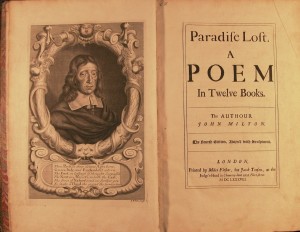 This experience of Aquino’s is generously likened to that of the turn-of-the-nineteenth-century Romantic Satanists by Ruben van Luijk in his scholarly tome Children of Lucifer: The Origins of Modern Religious Satanism,4 but the learned Aquino, his erudition notwithstanding, makes several errors in his assessment of John Milton and Paradise Lost’s journey to becoming “one of the most exalted statements of Satanism ever written.” Milton, who had penned The Tenure of Kings and Magistrates (1649) in immediate support of the regicide of Charles I, worked for Oliver Cromwell’s government as secretary for foreign tongues, as the Puritan poet enjoyed a vision of Cromwellian England as a new Israel, the English as God’s new “chosen people.” Paradise Lost was composed during the Restoration, which followed the Lord Protector’s demise, and was published in 1667, seven years after Charles II reclaimed the throne. If anything, it is rather remarkable that Milton, who was briefly imprisoned during the persecution of the regicides, was during this oppressive period able to publish Paradise Lost, with all of its embedded antimonarchical imagery and messages. Additionally, the “titanic irony” of Milton’s Paradise Lost is not that it has been “lauded as a compliment to Christianity,” but rather that it became celebrated as a Satanic epic. Paradise Lost was to be a Christian epic poem whereby Milton would “justify the ways of God to men” (I.26) and demonstrate “the better fortitude / Of Patience and Heroic Martyrdom” (IX.31–32), as embodied in the Son of God. The reading of Milton’s Satan as the poem’s “hero” is one which evolved since its seventeenth-century inception, and it wasn’t until the advent of Romanticism around the turn of the nineteenth century that Satan was seen as the true hero of the poem.
This experience of Aquino’s is generously likened to that of the turn-of-the-nineteenth-century Romantic Satanists by Ruben van Luijk in his scholarly tome Children of Lucifer: The Origins of Modern Religious Satanism,4 but the learned Aquino, his erudition notwithstanding, makes several errors in his assessment of John Milton and Paradise Lost’s journey to becoming “one of the most exalted statements of Satanism ever written.” Milton, who had penned The Tenure of Kings and Magistrates (1649) in immediate support of the regicide of Charles I, worked for Oliver Cromwell’s government as secretary for foreign tongues, as the Puritan poet enjoyed a vision of Cromwellian England as a new Israel, the English as God’s new “chosen people.” Paradise Lost was composed during the Restoration, which followed the Lord Protector’s demise, and was published in 1667, seven years after Charles II reclaimed the throne. If anything, it is rather remarkable that Milton, who was briefly imprisoned during the persecution of the regicides, was during this oppressive period able to publish Paradise Lost, with all of its embedded antimonarchical imagery and messages. Additionally, the “titanic irony” of Milton’s Paradise Lost is not that it has been “lauded as a compliment to Christianity,” but rather that it became celebrated as a Satanic epic. Paradise Lost was to be a Christian epic poem whereby Milton would “justify the ways of God to men” (I.26) and demonstrate “the better fortitude / Of Patience and Heroic Martyrdom” (IX.31–32), as embodied in the Son of God. The reading of Milton’s Satan as the poem’s “hero” is one which evolved since its seventeenth-century inception, and it wasn’t until the advent of Romanticism around the turn of the nineteenth century that Satan was seen as the true hero of the poem.
It was the Romantics who were responsible for recognizing that Milton, inadvertently or otherwise, created the most sympathetic and sublime Satan imaginable—the arch-revolutionary who, though “Hell-doom’d” (II.697), remains nobly defiant in the face of “the Tyranny of Heav’n” (I.124). Milton’s Paradise Lost was the principal inspiration for the Romantic Satanism phenomenon, becoming something of a Bible to the Romantic Satanists. While Aquino may not have been terribly well-versed in the history of the Miltonic-Romantic tradition, his reading of Paradise Lost was nevertheless very much a Romantic reading:
…Satan’s great “sin” was ultimately that of individualism: In order to follow the dictates of his own will, he broke away from the collective will of God, regardless of its “social beneficence.” Even when confronted with the horrors of Hell, Satan valued his individualism above all else. “Better to reign in Hell,” he said in Milton’s Paradise Lost, “than serve in Heaven.”5
As Aquino immersed himself in Milton, however, the officer felt that the Satanic epic had fallen short of what he was searching for:
As much as I admired Paradise Lost, I was annoyed at its ever-present, if pro forma bias. The die was loaded against Satan; he might put up a good fight, but in the end he was doomed to defeat. It was not so much that I wanted to see him triumph. Rather I felt that his power and position were equal to God’s if not more potent, and I wanted to see a contest that would more accurately represent the struggle between the Powers of Darkness and those of Light.6
Aquino proceeds to relate that he took it upon himself—or rather that he was chosen by the Powers of Darkness—to pen a work of demonic cosmology, The Diabolicon (1970), which Aquino believed to be inspired writing, hence the dramatic picture he paints of feeling compelled to continue writing it even in the midst of life-or-death situations in Vietnam. Aquino sent The Diabolicon back to San Francisco, and while the work is by no stretch of the imagination superior to Milton’s Paradise Lost,7 it was apparently well received by LaVey, who proceeded to incorporate portions of the text into at least one Church of Satan ritual held at the Black House.8
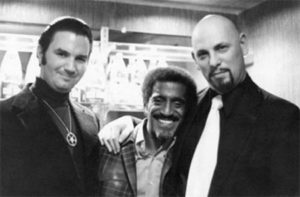
LaVey expressed to Aquino that he saw in him a rising star, and once stateside Aquino indeed rose swiftly in the ranks of the Church of Satan, becoming LaVey’s right-hand man. The mutual respect was to become mutual contempt, however. In Paradise Lost, “Devil with Devil damn’d / Firm concord holds” (II.496–97), and this concept of infernal camaraderie is best exemplified in the relationship between Milton’s Satan and Beëlzebub, Satan’s trusted second-in-command. The occult world, contrariwise, is notorious for its warring egos, backbiting, and infighting, which the deterioration of the LaVey–Aquino relationship was to serve as the high-profile case of. As mentioned above, Aquino admired LaVey for launching history’s first openly Satanic organization, but he harbored reservations about the ex-carny’s aesthetic, which clashed with his own Miltonic predilections. For instance, Aquino became the editor of the Church of Satan’s official bulletin, The Cloven Hoof, and one of the amusing anecdotes Aquino relates in his mammoth Church of Satan tome is the tension between himself and LaVey over the publication’s cover image. “The first thing the new Hoof Editor needed was a quarter-page masthead,” Aquino explains, “and I turned to [my wife] Janet, who created a bat-winged, Miltonian Satan hurling bolts of fire across the page to form the blazing words ‘Cloven Hoof.’ ” Aquino goes on to explain that LaVey decided to intervene and design the masthead himself, producing “a magnificently hideous Baphomet goat-dæmon, whose most inescapable feature was a hairy, erect phallus.”9
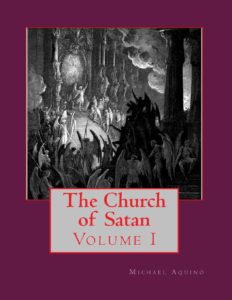 Tensions escalated between Aquino and LaVey, the former wishing to see Satanism become an occult order of esoteric distinction, the latter increasingly stressing Satanism as a down-to-earth, pragmatic philosophy of street-smart selfishness, the validity of which was demonstrated by Satanists’ personal and professional accomplishments “in the real world.” LaVey’s growing emphasis on materialism irked Aquino and various other more occult-oriented Church of Satan higher-ups, who would be needled by LaVey granting his chauffer a Satanic priesthood, which they believed ought to be earned by the accumulation of esoteric knowledge and occult practice. The last straw was LaVey’s move to offer Satanic priesthoods in exchange for donations to the Church of Satan. Things came to a head in June of 1975, when Aquino broke with LaVey and made sure to take a number of Church of Satan members with him, which would lead to the birth of a new Satanic organization.10
Tensions escalated between Aquino and LaVey, the former wishing to see Satanism become an occult order of esoteric distinction, the latter increasingly stressing Satanism as a down-to-earth, pragmatic philosophy of street-smart selfishness, the validity of which was demonstrated by Satanists’ personal and professional accomplishments “in the real world.” LaVey’s growing emphasis on materialism irked Aquino and various other more occult-oriented Church of Satan higher-ups, who would be needled by LaVey granting his chauffer a Satanic priesthood, which they believed ought to be earned by the accumulation of esoteric knowledge and occult practice. The last straw was LaVey’s move to offer Satanic priesthoods in exchange for donations to the Church of Satan. Things came to a head in June of 1975, when Aquino broke with LaVey and made sure to take a number of Church of Satan members with him, which would lead to the birth of a new Satanic organization.10
The organization Aquino established with a number of disgruntled ex-Church of Satan members who had followed him in Satanic defection could have resorted to a form of Satanism more in touch with its Miltonic-Romantic roots. Such a shift would have even seemed a no-brainer, considering Aquino’s stress on the Satanist being essentially the Miltonic Satan made flesh, or vice versa:
…Lucifer rejects the single condition set upon his Archangelic rank – that he may achieve self-actualization. “Better,” he decides, “to reign in Hell than serve in Heaven.” The implication is that the rejection of mindless nirvana brings one into abrupt and crushing contact with the almost endless obstacles which must be overcome in the search for pure knowledge. The Miltonian Lucifer is, in fact, our Satanic man.11
Milton’s Satan was obviously far more prominent in the mind of Aquino than LaVey, who in The Satanic Bible made only an oblique reference to Luciferian literature12 and merely mentioned the Satan of Paradise Lost seemingly at random in one of his published essay collections.13 One would expect Aquino to have capitalized on this significant difference as a means of distinguishing his own organization from LaVey’s. Aquino did not, however, decide on this literary and cultural direction. Despite his Romantic reading of Milton’s Paradise Lost as “one of the most exalted statements of Satanism ever written,” despite his preferred iconography of a “Miltonian Satan” (Gustave Doré illustrations for Paradise Lost adorn both volumes of Aquino’s Church of Satan), with Aquino, Satanism overshot Romanticism and landed in ancient Egypt, Aquino and company having adopted the evil Egyptian figure of Set as the central icon for the new, rival Satanic organization: the Temple of Set.
Notes
1. See Michael A. Aquino, The Church of Satan: Volume I: Text & Plates ([8th ed. 1983] San Francisco: N.p., 2013), pp. 13–14.↩
2. Anton Szandor LaVey, The Satanic Bible, intro. Peter H. Gilmore (New York: Avon Books, [1969] 2005), p. 45.↩
3. Aquino, Volume I, p. 73.↩
4. See Ruben van Luijk, Children of Lucifer: The Origins of Modern Religious Satanism (New York: Oxford University Press, 2016), pp. 349–50.↩
5. Aquino, Volume I, p. 60.↩
6. Ibid., p. 73.↩
7. See Michael A. Aquino, The Church of Satan: Volume II: Appendices ([8th ed. 1983] San Francisco: N.p., 2013), pp. 63–73; see also Flowers From Hell: A Satanic Reader, ed. Nikolas Schreck (Washington, D.C.: Creation Books, 2001), pp. 273–85.↩
8. See Aquino, Volume I, p. 74.↩
9. Aquino, Volume I, p. 150. To be fair, being an apologist for the Church of Satan’s goatish aesthetic wasn’t beneath Aquino. See “About That Goat,” in Volume II, pp. 121–22.↩
10. See Gavin Baddeley, Lucifer Rising: Sin, Devil Worship & Rock ‘n’ Roll (London: Plexus Publishing Limited, [1999] 2006), pp. 102–03; Chris Mathews, Modern Satanism: Anatomy of a Radical Subculture (Westport, CT: Praeger Publishers, 2009), pp. 83–84; van Luijk, pp. 347–48.↩
11. Aquino, Volume II, p. 44.↩
12. “Never has there been an opportunity, short of fiction, for the Dark Prince to speak out in the same manner as the spokesmen of the Lord of the Righteous…” LaVey, The Satanic Bible, p. 29.↩
13. “…Milton’s heroic Satan steal[s] the show from the Heavenly hosts in Paradise Lost…” Anton Szandor LaVey, “Confessions of a Closet Misogynist,” in The Devil’s Notebook, intro. Adam Parfrey (Los Angeles: Feral House, 1992), p. 90.↩
